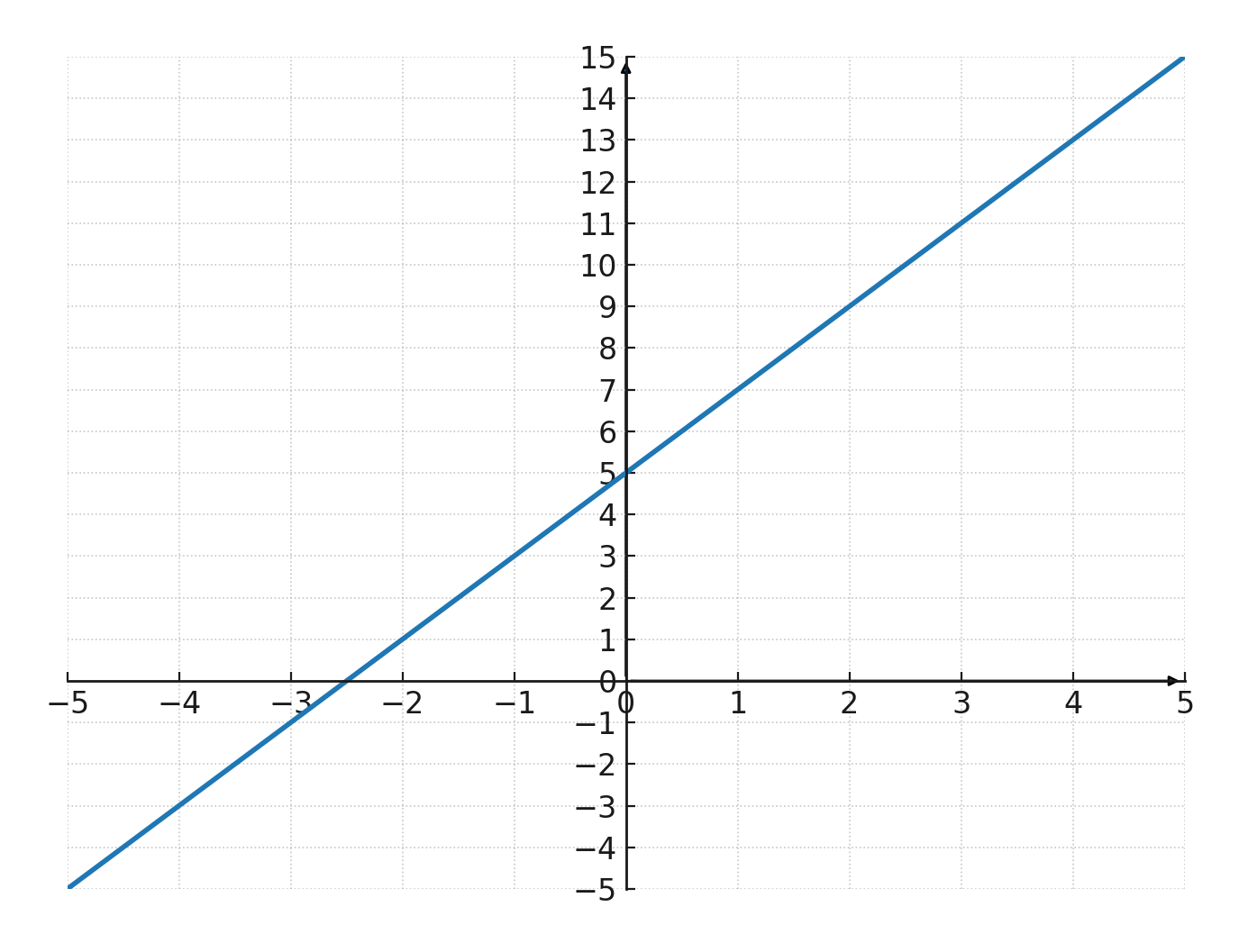Linear function
A linear function is written in this form:
$$ \large f(x)=a \cdot x + b $$
If a linear function is drawn as a graph, it will always be a straight line.
The graph can be increasing, decreasing or horizontal depending on \( \large a\), and \( \large b\) tells us where it cuts the y axis
Slope and intercept
\( \large a\) is called the slope:
- If \( \large a > 0\) the line is increasing from left to right
- If \( \large a < 0\) the line is decreasing from left to right
- If \( \large a = 0\) the line is horizontal, because no matter what \(\large x\) is, \(\large y\) is always the same.
\( \large b\) tells that the line will cut the y axis at the point \((0,b)\)
If we look at this function:
$$ \large y=2x+5 $$
Then we can see that it is an increasing line, because \(\large a=2\).
We can also see that it will cut the y axis at \((0,5)\), because \(\large b=5\).
Example
We try the function: \( \large y=2x+5 \)
The coordinates are entered in the value table below and then in the coordinate system, so the graph can be drawn:
| \(\large x\) | 1 | 2 | 3 | 4 | 5 |
| \(\large y\) | 7 | 9 | 11 | 13 | 15 |

Find the function rule from two coordinates
If we have the coordinates \((2,9)\) and \((4,13)\), it is possible to find \(\large a\) and \(\large b\) in the following way:
$$ \large a = \frac{y_2-y_1}{x_2-x_1} \Leftrightarrow $$
$$ \large a = \frac{13-9}{4-2} \Leftrightarrow $$
$$ \large a = \frac{4}{2} \Leftrightarrow $$
$$ \large a = 2 $$
When we have found \(\large a\), we can also find \(\large b\), with one of these two formulas. (It does not matter which one you use)
$$ \large b = y_1 - a \cdot x_1 $$
$$ \large b = y_2 - a \cdot x_2 $$
We use the first one:
$$ \large b = 9 - 2 \cdot 2 \Leftrightarrow $$
$$ \large b = 9 - 4 \Leftrightarrow $$
$$ \large b = 5 $$
The function rule for the coordinates \((2,9)\) and \((4,13)\) is therefore
$$ \large y = ax + b $$
$$ \large y = 2x + 5 $$